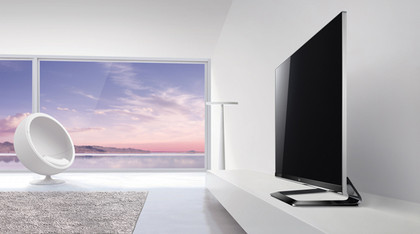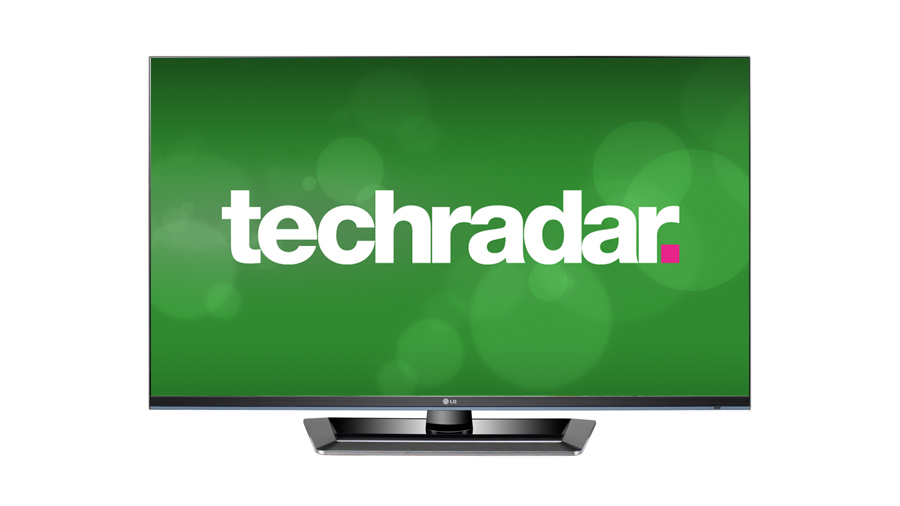Why you can trust TechRadar
While many of LG's Passive 3D TVs last year undoubtedly persuaded us that the technology was worthwhile and deserving of a big fanbase, it seemed to fare least well on LG's largest screen sizes. So it comes as a pleasant surprise to find ourselves mostly entranced by how 3D looks on the 55LM660T.
Donning one of the four free - and fetchingly multicoloured! - pairs of passive 3D glasses LG supplies with the TV, the advantages of passive 3D technology are immediately apparent. Bright 3D sequences, for instance, look fabulously punchy and dynamic compared with your average active 3D presentation, thanks to the way the glasses don't have to use any shuttering technology.
This doesn't just help bright parts of the picture either; it also means that dark backgrounds don't tend to look as flat and short of shadow detail as some of their active counterparts.
Then there's the fact that images suffer with less crosstalk ghosting noise than you tend to get with all the but the very best active 3D systems.
It's important to stress that the image isn't completely devoid of crosstalk, no matter how much LG might like to tell you that it is. But unlike some/many active 3D TVs, the crosstalk hardly ever appears on foreground objects, and is seldom truly distracting.
Or at least that's the case so long as a) you deactivate all the TV's noise reduction and motion processing circuitry (which is left on by default despite the fact that it introduces lots of blurring in 3D backgrounds) and b) you don't find yourself having to watch the 55LM660T from a vertical viewing angle greater than around 13 degrees. For at this point alignment issues between the glasses and the polarising sheet that lies across the 55LM660T's front can suddenly cause crosstalk galore.
The general crispness of the 55LM660T's 3D pictures helps them enjoy a fine sense of depth and scale too. And perhaps best of all, since the glasses don't use shuttering technology, you can watch 3D on the 55LM660T for extended amounts of time without suffering the sort of fatigue that generally accompanies active 3D viewing.
Sign up for breaking news, reviews, opinion, top tech deals, and more.
From a sensible viewing distance, moreover, the 55LM660T's 3D pictures also seem less overtly troubled by the loss of resolution and horizontal line structure that bothered us on last year's 55-inch passive 3D models. You can still make out slight evidence of horizontal 'blank lines' over small, bright parts of the image, such as the main menu text on Tangled, and the edges of bright objects tend to look jagged. But for some reason the picture looks crisper and the horizontal lines look less obvious than they did on last year's passive 3D sets.
LG isn't claiming to have introduced any great improvements to the passive 3D filter on the 55LM660T, so presumably the TV's more satisfying 3D effort is down to improvements to the core panel at the set's heart.
These sort of improvements should also, of course, positively impact the 55LM660T's 2D performance. And right away there's a big improvement to be seen with this new TV's backlight handling. For whereas last year's 55-inch edge LED LG TVs suffered with some quite overt backlight consistency problems, here the situation is much improved - especially once you've calibrated picture settings to deliver the optimum black level.
There remain faint traces of inconsistent lighting right at the very edges of the screen, but for the most part these aren't widespread or glaring enough to distract you from what you're watching, even during very dark scenes. Especially if you're watching the TV in quite a bright room.
Colours also look very intense and expressive on the 55LM660T, thanks to the screen's natural contrast and vibrancy, as well as what appears to be a good - though not quite great - colour processing system that ensures there's a subtle enough tonal range to avoid striping, blotching and plastic-looking skin tones.
The second dimension

HD 2D pictures look detailed and sharp, too - at least when the image is relatively static. In fact, they can look a little too 'forensic' if you use the set's edge enhancement and 'Super Resolution' tools. But it's only a moment's work to turn these off and let the screen's innate clarity speak for itself.
There is, though, a noticeable reduction in clarity and detail over moving objects. While this is not severe enough to be considered a deal-breaker for a TV which, after all, sits at the relatively affordable end of LG's latest passive 3D range, it's still a pity there doesn't appear to be any potent solution to it among the TV's processing options. At least the resolution loss appears more as subtle judder than more aggravating blurring, though.
Having touched on a negative in the LG's picture, there are a few more to mention, too. First, occasionally HD pictures look a touch noisy. Dark suits, for instance, can sometimes look strangely 'alive' with dot crawl noise.
Next, if you sit close to the screen you can see obvious signs of the 3D passive filter even over 2D pictures. These signs comprise horizontal line structure over bright image elements, and a degree of jaggedness to bright, contoured edges. To be fair, though, you only become strongly aware of these issues if you're sat quite a bit closer to the screen than most people would consider sensible...
Another issue is that with the picture calibrated to produce the best black level results (as in, where there's minimal greyness and backlight inconsistency), dark parts of the picture look rather low on the sort of shadow details that bring dark scenes to life.
Finally, the 55LM660T sadly continues a disappointingly long-running trend with LG TVs of suffering high levels of input lag (the delay between a source image arriving at the TV and it actually appearing on the TV's screen). Even using the TV's own Game preset, our tests measured an average lag of around 90ms, varying between around 65ms at its best to a much more common reading of nearly 100ms.
This is undoubtedly high enough to impact your performance with timing-based games like Call of Duty and Guitar Hero. Given how many times before this issue has been raised about LG TVs, it will strike keen gamers as very disappointing that LG still hasn't made inroads into sorting the problem out.

John has been writing about home entertainment technology for more than two decades - an especially impressive feat considering he still claims to only be 35 years old (yeah, right). In that time he’s reviewed hundreds if not thousands of TVs, projectors and speakers, and spent frankly far too long sitting by himself in a dark room.
